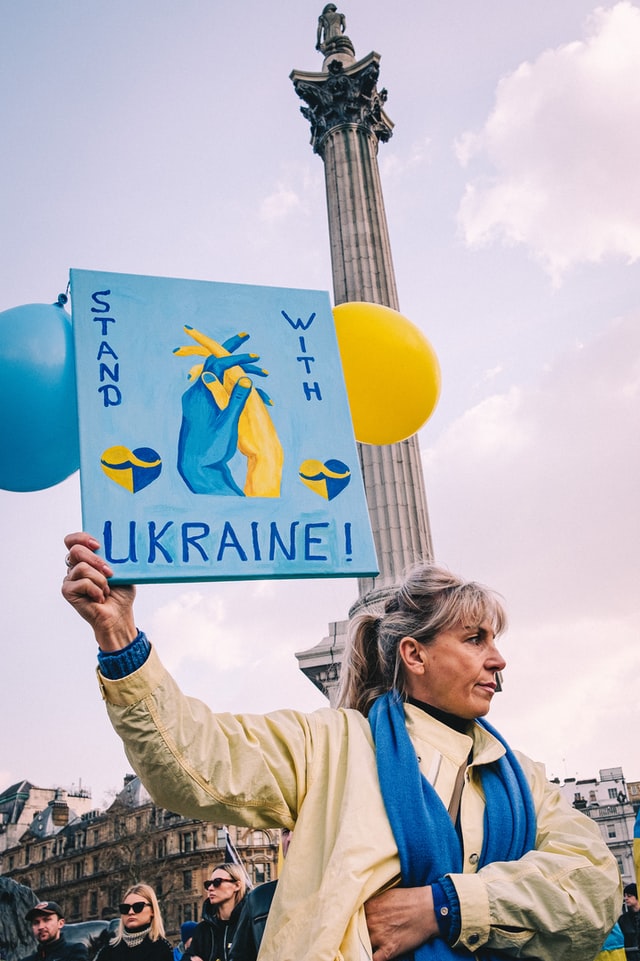Ukraine was on track to repeat Poland’s miraculous doubling of its GDP. Vladimir Putin robbed the nation and its people of that future.

“As everywhere, life in the Ukraine before this invasion wasn’t without its challenges,” says Olena Shevchenko when asked about her life in Ukraine prior to February 24, 2022. “But over the last 10 years, there had been a real transformation. Our lives were very normal before this, we had self-determination.”
A war zone is no place for children. In the month leading up to the attack, Ms. Shevchenko, like so many other Ukrainians, made the difficult choice to flee the country with her teenage daughter.
The road out of Ukraine wasn’t easy, but after being invited to stay in the United States by a lifelong friend until the trouble passed, Shevchenko decided to err on the side of caution.
She wasn’t alone.
“I will never know what made me decide it was time to go,” says Ms. Shevchenko. “There was something in the air that last month, many people- mothers with young children in particular- were starting to feel very afraid.”
“Some people just didn’t believe an invasion would happen, they couldn’t,” she adds. “They thought those of us who wanted to leave were overreacting.”
Thinking the danger would soon pass, Shevchenko’s two adult children elected to stay in Ukraine.
Last month, he was an attorney; today Shevchenko’s son is on military patrol duty, working for Ukraine’s civil defense corps. Shevchenko’s grown daughter spends her days driving refugees over the Polish border, especially families fleeing with young children or animals.
Putin’s plans for the Ukraine, in retrospect, were anything but usual. The full-scale military invasion which took place only one month ago today was far beyond the Putin’s usual tactics of information warfare, hacking and minor military incursions.
No one knows how this war will end; very few expected Ukrainian forces to withstand the attack this long, perhaps least of all Vladimir Putin. But whether or not Putin overestimated Russia’s chances of success in Ukraine, the damage he intended to cause may already be done.
Even if Ukrainian forces prevailed today, this hour, the road to rebuild the nation and recover from this conflict is already sure to be long and arduous.
The Ukraine, aside from international concerns about internal corruption- likely overblown as a result of Russian propaganda- was an up and coming nation before this turn.
“Most former Soviet states have had problems with corruption since the USSR fell,” says Shevchenko. “The corruption in Ukraine was real; the focus on the Ukraine in particular was propaganda.”
Clearly Putin’s designs on Ukraine aren’t a new phenomenon. The idea that Russia’s propaganda ministers undermined Ukraine to prevent the nation from being admitted into international security bodies like NATO, in advance of this planned invasion, aren’t at all far-fetched.
To deny the possibility is to entertain the ludicrous idea that Vladimir Putin is a savior figure, selflessly saving the Ukraine from corruption and itself.
The idea is ludicrous for many reasons, not least of which is the fact that Ukraine was on an excellent trajectory before Putin pulled the rug out.
More and more foreign companies were beginning to invest in Ukraine, the economy was improving markedly, new manufacturing concerns were sprouting up everywhere. The up-and-coming nation looked to some global economists to be in line to be the next “Polish Miracle”.
Since 1989, Poland has doubled its GDP and is today boasts the sixth largest economy in Europe.
Now, however, whatever Vladimir Putin does from here- whether he agrees to cease hostilities, as is hoped, or continues his assault of Ukrainian forces until the bitter end while the world looks on in horror- untold damage to Ukraine’s prospects has already been done.
Global investors are looking for safe nations in which to place their bets; not countries which might be seized or gobbled-up by a marauding neighboring nation at any moment. Privately owned assets aren’t safe near dictators desperate to hold onto power. There is always an urgent need somewhere.
The impact this invasion is likely to have on Ukraine’s long-term economic prospects is staggering.
That Putin has damaged Russia’s economic prospects as much as the Ukraine’s, perhaps more, must be of little comfort to a nation of people displaced, to families fleeing the violence of war.
It is of no comfort at all to those who have already been killed in the conflict- soldiers and civilians alike.
“The most important thing to know is that the casualties in Ukraine are being way undercounted,” says Ms. Shevchenko, who maintains regular contact with loved ones still in Ukraine. “Maybe 10 or 20 times that number of people have already died. The humanitarian crisis in the Ukraine cannot be overstated.”
Social media is flooded with first-hand accounts, photos, and videos that make the toll of the conflict painfully clear. Even undercounted, the human tragedy is already overwhelming.
This conflict, as deadly as it is, isn’t the only threat the Ukrainian people must face. The true, long-term cost of this invasion is going to depress the Ukrainian economy, suspend economic growth and arrest the nation’s development into a financially stable and secure country for a generation.
World leaders considering the costs of the war in Ukraine must weigh the long-term economic impact in the balance. Governments, corporations and individuals worldwide who are interested in helping the Ukraine should think about making long-term investments, should the nation maintain its sovereignty.
When Putin declared war on Ukraine, he was really declaring an economic war on the world, on the global marketplace and on the fortunes of every nation impacted by this unmitigated humanitarian and economic disaster.
If, and when, the shooting war has ended in Ukraine, the real work will only have just begun.
(contributing writer, Brooke Bell)